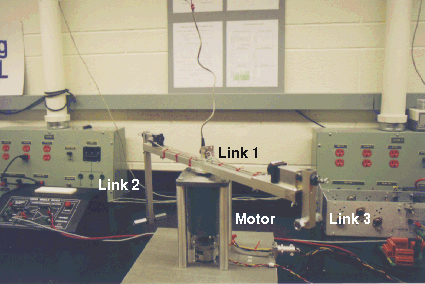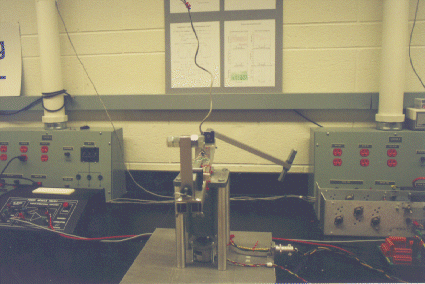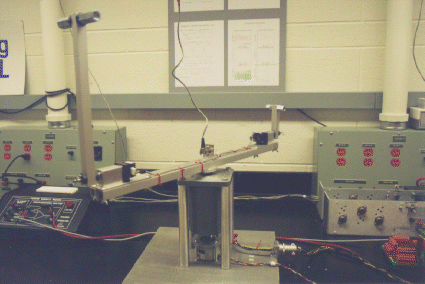 Return to S. A. Bortoff's home page.
Return to S. A. Bortoff's home page.
The rotating inverted double pendulum is (also) an excellent test bed for nonlinear control theory. It is similar to the classic inverted pendulum control experiment (see the rotating inverted pendulum), except that there are two unactuated links, each attached to the end of an actuated horizontal link. See the first photo below. We have devised a nonlinear feedback control law that swings both Links 2 and 3 from their pendant, stable equilibria to their unstable, inverted equilibria, and then stabilizes them in this inverted position. The result was presented at the 1996 IFAC Congress. For a compressed postscript copy the paper, click here.
The first photo below shows the mechanism in its stable, pendant position.
The single motor's axis points up, applying a torque directly to Link
1, which rotates in the horizontal plane. The bearings connecting Link 1
to Links 2 and 3 are sensed with optical position encoders,
but are not powered.

The second photo, below, shows Link 3 stabilized in its inverted position,
and the swing-up controller pumping energy into Link 2, so that it swings
from its pendant to inverted position. This is challenging because, with
Link 3 stabilized, the map from input torque to the position of Link 1
is non-minimum phase.

The third photo, below, shows the double pendulum after the swing-up
control has transfered Link 2 to its inverted position and engaged the
stabilizing controller. Links 2 and 3 are now balanced at their inverted
equilibria.

The fourth photo, below, shows my son's reaction to the demonstration. :-)

Scott Bortoff, bortoff@control.toronto.edu